How to Write a Personal Business Letter to Reach Your Goals and Show Your Expertise
1. What is a personal business letter?
2. What is the difference between personal business letters and business letters?
3. Main reasons to write a personal business letter
4. What information should be included in a personal business letter?
5. Step-by-step guide: How to write and structure a personal business letter
6. Essentials of the personal business letter formatting
7. Common mistakes in writing personal business letters
8. Tips for writing a strong personal business letter
9. How to send a personal business email letter via email
10. Best 5 samples for all occasions
Useful tools:
1. Newoldstamp - Email signature marketing
2. Sender - Email builder and sender
3. Reply.io - Personal email outreach, calls, and tasks
4. RocketLink - Your branded short linker
5. Canva - Online tool for making designs
6. Flipsnack - Interactive flipbook maker
At the center of any relationship, there is communication. This is true for business relationships as well: they are dependent on constant meetings, calls, and written correspondence.
Luckily, all the technology makes interaction with others much simpler and more time-efficient. There is no need anymore to be physically present at a meeting, and sending letters has become an instant activity thanks to email. And still, once in a while it is expected that you write a business letter on paper and send it via post.
Why so? First of all, it is more professional. Secondly, it is a gesture that shows that you have invested more time into reaching out to a particular person or organization.
If you find writing actual letters too challenging, fear not: this is an article for you. In it, we’ll look cover all the main aspects of writing personal business letters and look into the following:
- How to write a personal business letter
- What is the difference between a personal business letter and a business letter?
- How to format a personal business letter
- Tips and best practices for writing personal business letters
- What universal samples you can use when writing personal business letters
Let’s start with the basics first.
What is a personal business letter?
Normally, a personal business letter is the one that you write as an individual to either a company or other individuals within a particular business. It is normally typewritten. Although the reasons and occasions for writing one might differ, your main goal is usually of a personal character, while your relationship is of a business nature. An important point to keep in mind is that personal business letters are slightly different from business letters.
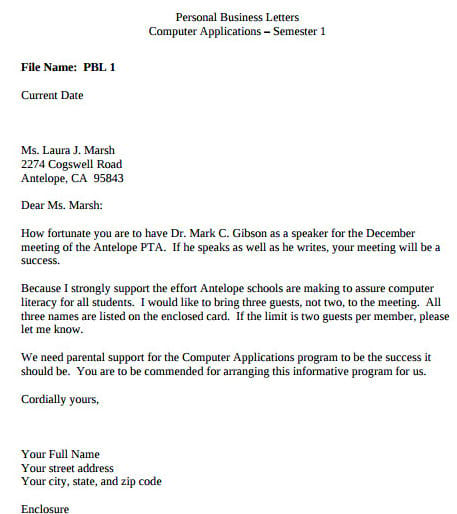
Image courtesy of Sampletemplates
What is the difference between personal business letters and business letters?
The main purpose of personal business emails is building relationships and establishing contact. However, that is also true for business letters. The principal difference between the two is that you write the personal one on your behalf. Neither marketing nor sales letters fit in here.
The reasons to write a personal business letter, on the other hand, can be different. Let’s take a look at some of the common situations in the next paragraph.
Main reasons to write a personal business letter
-
To request information or action
The most common example is a letter to government officials or your bank representative. For instance, you want to get a social security statement or request a credit score. Another popular use case is a job application letter.
-
To congratulate
There are lots of occasions for this: a birthday, birth of a child, work anniversary, career promotion, or, for example when the company you are watching gets impressive funding.
-
To say “thank you”
One can be grateful for anything. You can write a letter to thank someone for a meeting or a job interview, for mentoring you, or for sharing with you some useful information.
-
To follow up after an occasion
There are numerous possible occasions for this as well. You can follow up with your hiring manager, with a workshop conductor, with your insurance agent, or with a business partner. Following up is a great way to remind people of yourself.
-
To tell about your decision
For instance, when breaking the contract with your service provider or accepting a job offer, you can use a personal business letter format to make it more professional.
-
To say sorry
If you can’t attend an event or any occasion, it might be more polite to write a letter in which you apologize for the change of plans. It can also be used when you express your regrets when something bad has happened.
-
To invite to an event
Although invitations, like congratulation notes, are usually sent with cards, you can use a personal business letter as well. It all depends on the level of formality.
-
To welcome a new business partner
If you’ve got a new business partner, you can send a letter both from the company you represent and on your behalf. In the case of the latter, a personal business letter is the right choice.

What information should be included in a personal business letter?
Let’s now see what the main parts of a personal business letter are. In almost any case, the paper should consist of the following:
- Sender’s information
- The date
- Recipient’s information
- Salutation
- Body
- Closing
- Your signature
Depending on the purpose of your correspondence, other elements can be present as well. For example, your company logo (if you are writing as a representative of your company) or an additional note listing the attachments in case you have any.
Let’s look at the components in more depth.
Step-by-step guide: How to write and structure a personal business letter
Below is your main guide on how to write a personal business letter for any occasion. Just make a list of these elements before you start crafting your message. We advise you to make a template and keep it, so that, once the occasion occurs, you can simply fill in the necessary details.
Note: This instruction follows the block formatting style. We’ll talk about it more below.
1. Sender's information
Start with your address at the top of the page. Remember that you just need the street name, building number, apartment or suite (if applicable), ZIP code, the city, and the country for international correspondence. Don’t include your name here, as it will follow at the bottom of the page. Also, remember to avoid abbreviations of any kind. For example, write “Street” instead of “St.”
2. Date
One empty line after the sender’s address, write the date the letter was written. Make sure to use the right date format depending on your country. For example, in the US, it will look like this:
March 6, 2022
and like this in the UK and Europe:
6 March 2022
3. Recipient's information
Now leave one empty line after the date again and write the addressee’s name and address. Use the appropriate title if your relationship with the recipient is a formal one. Don’t forget about academic titles if the person has a degree. For the address, follow the same rules as in step 1 (Sender’s information).
4. Salutation
One empty line after the previous block, address the person to whom you are writing. Start with “Dear” and use the appropriate title. Remember: if your recipient is a woman, and you don’t know if she prefers Miss, Mrs. or Ms., use the neutral Ms. If you know the person well, you can use just the first name. Follow the greeting with a colon and leave an empty line.
5. Body
Start the body of your message with a capital letter. Don’t forget about a brief introduction if the person doesn’t know (or doesn’t remember) who you are. Next, state the purpose of your writing and provide the necessary details. If you have more than one paragraph, separate them from one another with an empty line. At the end of the body, sum up what you said and provide a call to action.
6. Closing
Use a formal closing that you are comfortable with and that works in this particular situation. The safe way to go is “Best regards” or something similar. “Thank you” or “Sincerely” would work in some instances as well.
7. Signature
The signature block consists of:
- Your handwritten signature
- Your name
- (Optional: your company name)
- Your address and contact information (or your corporate contact details if you are writing on behalf of the company)
Start this block with four empty lines after the closing. You will use this space for your signature. Write your name, address, phone number, and email—any contact details that would work for you. In case you are writing as a company representative, use the company name and address.
8. Optional elements
For empty lines after your address and phone number, you can mention all documents that you have enclosed and are sending together with the current letter. You can either state the number of enclosures or list them all.
Essentials of the personal business letter formatting

You should remember that personal business letters require official style and formatting. In this section, we’ll talk more about how to write a personal business letter correctly, so that it has a professional look.
-
Use block formatting
When we wrote about the elements, we had the block format of a personal business letter in mind. It is characterized by leaving a particular number of empty lines between certain blocks and paragraphs. The main rules are:
- Left-align all your text, including the body and other blocks (addresses, date, greeting, closure, and signature).
- Use the 2-inch margin from the top of the page.
- Use the 1-inch margins on both the left and the right sides.
- Single-space your text.
- Leave 1 empty line after: the sender’s info, date, recipient’s info, greeting, and each body paragraph.
- Leave 4 empty lines after: the closing and your signature.
- Do not indent paragraphs.
-
Choose an appropriate font style
Choose the proper font type and style. Make sure to use one font only. Use standard fonts, such as Times New Roman or Arial. If your recipient is less conservative, you can go with other readable fonts that are widely accepted and used for business correspondence. The proper font size is 12.
-
Highlight important parts of the text
To ensure better readability, you can highlight certain parts of the text that you find important. Depending on your audience, you can either do it with bold and italic formatting or with color. Still, avoid making your letter too colorful, as it decreases the readability of the document and is considered unprofessional.
-
Use company templates
Although a personal business letter format doesn’t require using business letterheads, you can still do it. If you are writing as your company’s representative or on behalf of the company, be sure to use special corporate templates. They normally include the company’s logo and address. In case it is appropriate, you might use the corporate stamp as well. Still, be careful: if you are acting as a private person, you should not use any corporate symbolism.
Common mistakes in writing personal business letters
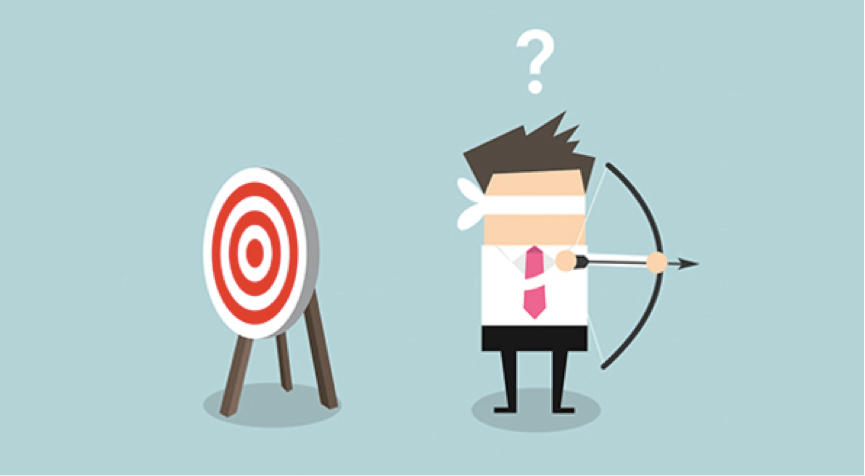
Before you start writing your letter, we would like to point out the most common mistakes that people often make. So please try to avoid the following:
- Being too informal
- Being too formal and unfriendly
- Writing a vast amount of text
- Using the wrong title when addressing the person
- Forgetting to introduce yourself when you are not too familiar with the recipient
- Failing to proofread your letter before sending it
Remember that your personal business letter is a standardized piece of writing that should follow certain style guidelines. On the other hand, it is also important to keep in mind that your recipient is a living person. So keep your letter both professional and polite.
Tips for writing a strong personal business letter
Most of the tips for writing a personal business letter are the same as those for creating any other piece of business correspondence, from thank-you notes and autoresponder messages to prospecting emails. This is why you might find some of the following best practices familiar. And still, it won’t hurt repeating them.
-
Avoid excessive familiarity
First of all, remember to keep a slightly bigger distance between yourself and the recipient when it comes to business correspondence. It often happens that you don’t know the person you are writing to. The two of you might have absolutely different social statuses, backgrounds, or even different perceptions of what can be considered as funny or appropriate.
-
Be concise and keep to the point
Remember that your personal business letter always has a purpose. This purpose should be clear to your recipient from the very start. Avoid generalizations, metaphors, figures of speech, or anything that your addressee might misinterpret. Keep your message to the point and don’t go beyond that.
-
Avoid spelling and grammar mistakes
No matter how well you have stated your point and formatted the letter, spelling mistakes or grammar errors might lead to drastic consequences. It is much better not to write the message in the first place than send it full of mistakes. Spend some extra time to check your letter several times before sending it. If you are not sure of your grammaticality, use Grammarly (or some other app) or show your writing to someone who’s good at proofreading.
-
Be polite and professional
It is vital to stay professional when it comes to business correspondence. However, the most important thing to remember is that you are writing to another human being. Sometimes, this person might be reading dozens of letters like this every day. So make it worth their time by keeping it polite and friendly.
-
Use a call to action
What do you expect from your recipient upon reading your letter? Do you want them to write or call you back? Or do you want them to send you some information or maybe be to solve a problem? You need to specify this at the end of your letter. Give the person a clear call to action, so that they know what to do next.
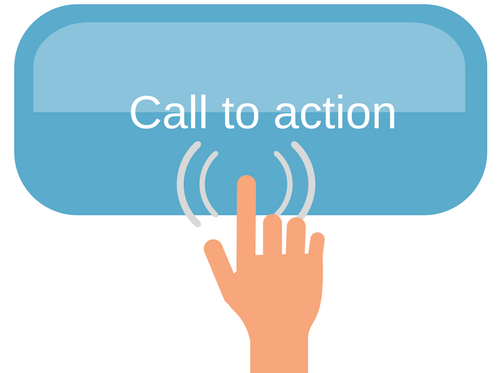
-
Proofread and edit your letter
We have already mentioned the importance of proper grammar in your correspondence above. Remember that leaving mistakes unattended is the worst you can do. It’s not because of the mistakes themselves that can make you look not so smart, but rather because it might create an impression that you don’t care enough to proofread your letter.
-
Use active voice
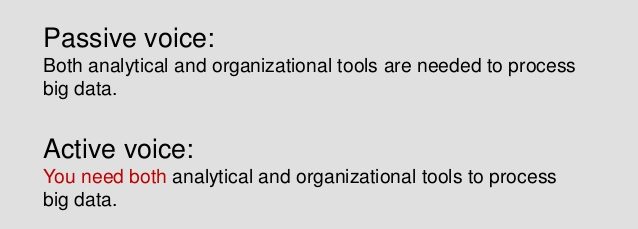
Although there is nothing too evil about using the passive voice, consider avoiding it. It would shift the emphasis away from the subject to the object, and, in some cases, this means removing responsibility as well. Saying “a problem was spotted” is not the same as saying “I spotted a problem,” although the two look synonymous. Your sentences sound stronger with an active voice.
How to send a personal business email letter via email
In some cases, you don’t need to send a personal business letter via post—an email might be a better option. This is especially true if the paper letter takes too long to reach the recipient or if the latter specifies that it’s better to contact them via email.
In such cases, you can do one of the two things:
A) Write a standard personal business letter and attach it to your email
B) Write the text of your personal letter in the email body
If you go with option B), then you don’t need to pay so much attention to formatting your text. You may also avoid including your recipient’s postal address regardless of the option, especially if you don’t know it.
What’s more, in the case of emails, you can replace your personal signature with your electronic signature or email signature. Consult the respective requirements to understand which one would suffice here.
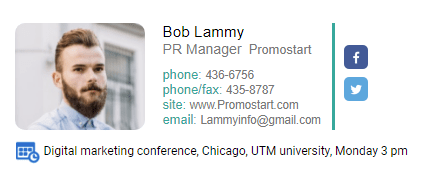
Personalize a business letter even more with an email signature builder
Best 5 samples for all occasions
Before summing up this article, let us give you several samples of a personal business letter. They are more or less universal, and you can take any of them and adjust to your specific occasion. Don’t forget to change the names and personal details of both you and your recipient.
Sample #1: A personal business thank-you letter
Un-Conf LLC
High Street 123
London [POSTAL CODE]
6 March 2022
Brian Peters
Hospital-ly LLC
Low Lane 47
London [POSTAL CODE]
Dear Brian:
I would like to thank you for your help organizing the “Tech Un-Conference” in London earlier this month. Without your support, my company could not have managed to accommodate the speakers, which might have resulted in most of them not being able to participate.
As gratitude, I would like to invite you and your employees to a series of online coding workshops, which you can attend at any time that is convenient for you.
I would ask you to select the technology or language that is of the most interest to each of you and get back to me by the end of the next week. I will then send you your personal registration codes. You can reach me either at name@company.com or phone number +440000000000.
If you have any questions or need more information about the available workshops, please don’t hesitate to contact me.
Kind regards,
Angela Markovic
Un-Conf LLC
High Street 123
London [POSTAL CODE]
Enclosed: Un-Conf Workshops Brochure
Sample #2: A letter to a local retailer regarding delayed delivery
[Sender’s Street Address]
[City, Zip Code/Postal Code]
[DATE]
[Recipient’s Name]
[Recipient’s Street Address]
[City, Zip Code/Postal Code]
Dear [Recipient’s Name]:
On 12 January 2022, I ordered a pair of sneakers from your online shop (order no. 100997634). According to the information on your Shipping and Delivery page, I should have expected the delivery by 26 January 2022. However, it has been over a month since the expected delivery date, and I still have not received my order. I would like you to look into the possible reasons for why my order might have been late.
I believe that there has been a simple mistake in the order processing. I would like to purchase from your store in the future and hope this current problem can be solved within a few days. If you need more information about my order, you can reach me at 444-444-3333 or myname@emailprovider.com.
Thank you in advance!
[Sender’s Name]
[Sender’s Address]
Sample #3: A letter of apology
[Sender’s Street Address]
[City, Zip Code/Postal Code]
[DATE]
[Recipient’s Name]
[Recipient’s Street Address]
[City, Zip Code/Postal Code]
Dear [Name],
I would like to apologize for canceling our appointment last week. I understand that my last-minute call must have interfered with your plans for that day. Were this not an emergency, I would not have done this.
I want you to know that our good relationship is of great importance to me. Therefore I would like to make it up to you and invite you to lunch. Please choose the time and date when you are available, and I will make sure I will be there. Of course, the lunch is on me.
You can reach me at any time at my email name@company.com or phone 444 444 3333.
Looking forward to your response.
Sincerely,
[Sender’s Name]
[Sender’s Address]
Sample #4: A letter to an employee
[Sender’s Company Name]
[Company Street Address]
[City, Zip Code/Postal Code]
[DATE]
[Recipient’s Name]
[Recipient’s Street Address]
[City, Zip Code/Postal Code]
Dear Marvin,
My warmest congratulations on being chosen as the employee of the year! To show you our entire company’s appreciation of your outstanding work, I would like to award you a bonus at the end of this month.
I also want to thank you personally for all your commitment. Thanks to your skills and expertise, our company has grown over the year from a ten-people startup to a well-established international business. You are an invaluable asset to our company and a role model for others in the team. I cannot thank you enough.
Sincerely,
Janet Deliah
CTO, [Company Name]
Sample #5: An invitation letter
Un-Conf LLC
High Street 123
London [POSTAL CODE]
6 March 2022
Brian Peters
Hospital-ly LLC
Low Lane 47
London [POSTAL CODE]
Dear Brian:
I would like to invite you and your team to the following workshops:
- The foundations of UX design (Start: 6 May 2022)
- Building apps with React Native (Start: 14 June 2022)
- Data structures (Start: 15 June 2022)
Please find the personal codes and course programmes enclosed.
I hope you enjoy the workshops as much Lauren, Paul, and Aneesh enjoyed designing them. If you have any questions or need more information about the available workshops, please don’t hesitate to contact me. As always, you can reach me at name@company.com or +440000000000.
Kind regards,
Angela Markovic
Un-Conf LLC
High Street 123
London [POSTAL CODE]
Enclosed:
- The foundations of UX design: registration code x 7, programme x 7
- Building apps with React Native: registration code x 5, programme x 5
- Data structures: registration code x 3, programme x 3
Conclusion
Writing personal business letters is not that hard if you know what elements they consist of and how to format them. After you write such a letter once, you are covered. Still, you need to make sure you don’t make crucial mistakes like not proofreading it before sending or putting too much detail into it, or being too robotic in your writing.
Just remember that, regardless of your reason for writing a personal letter, you must always stay polite, professional, and to the point. And if you have any doubts, you can always consult one of our samples.



